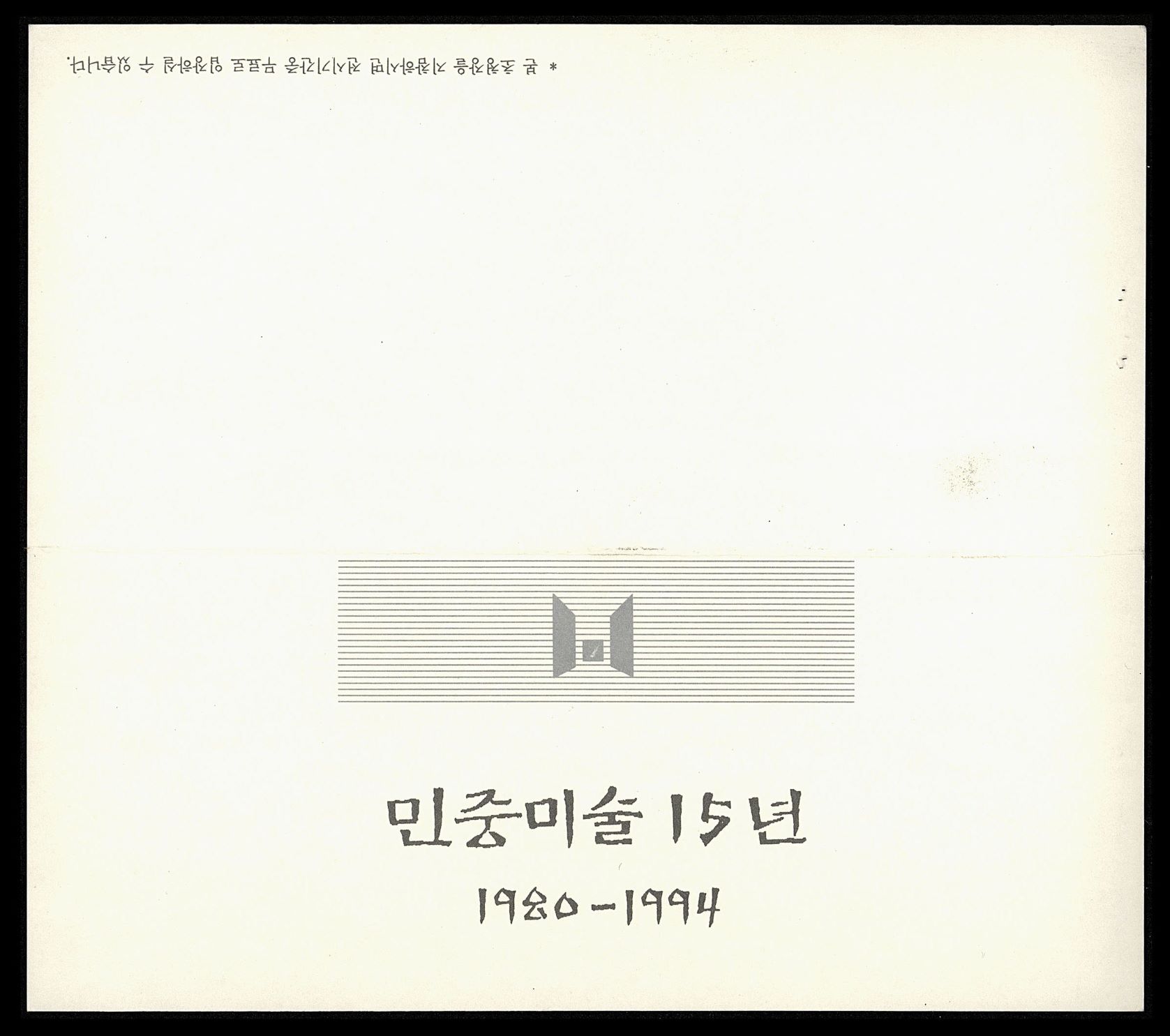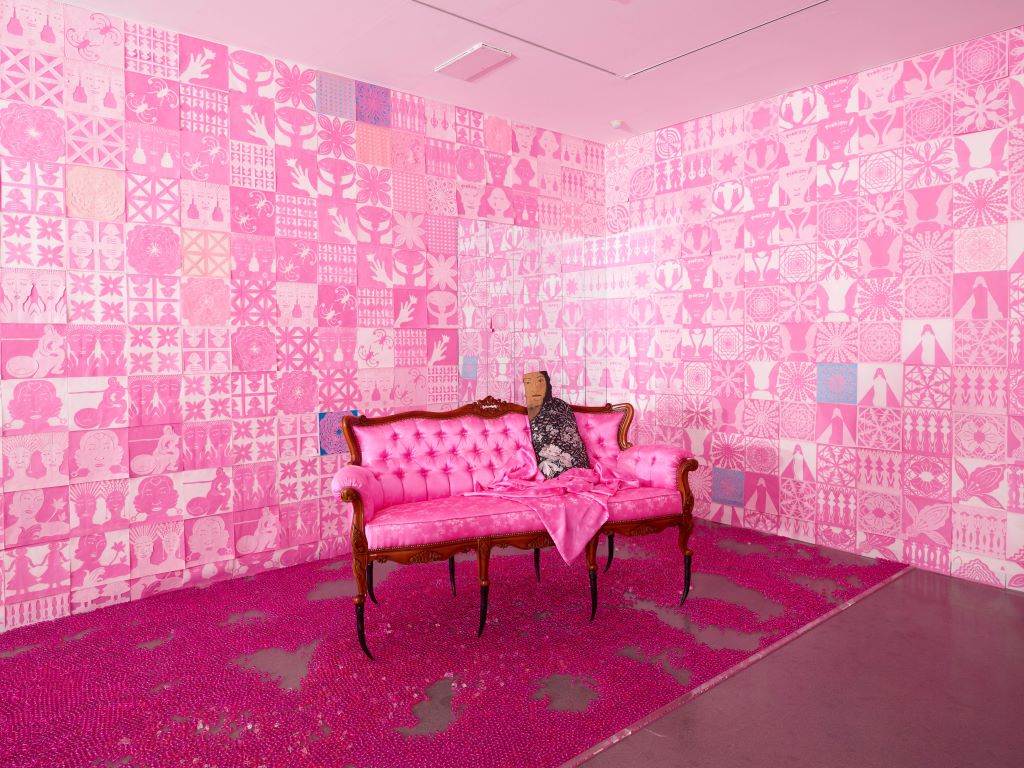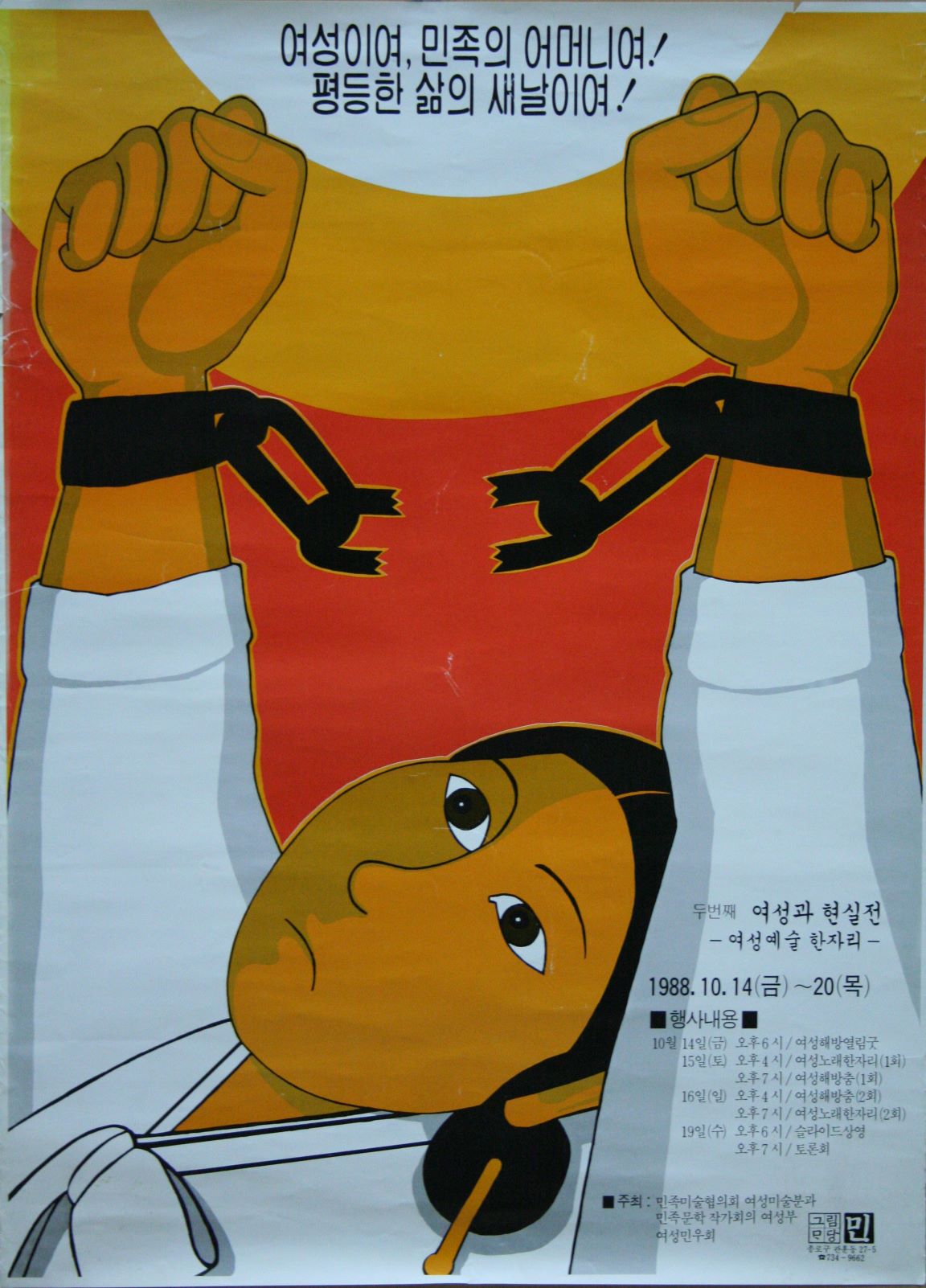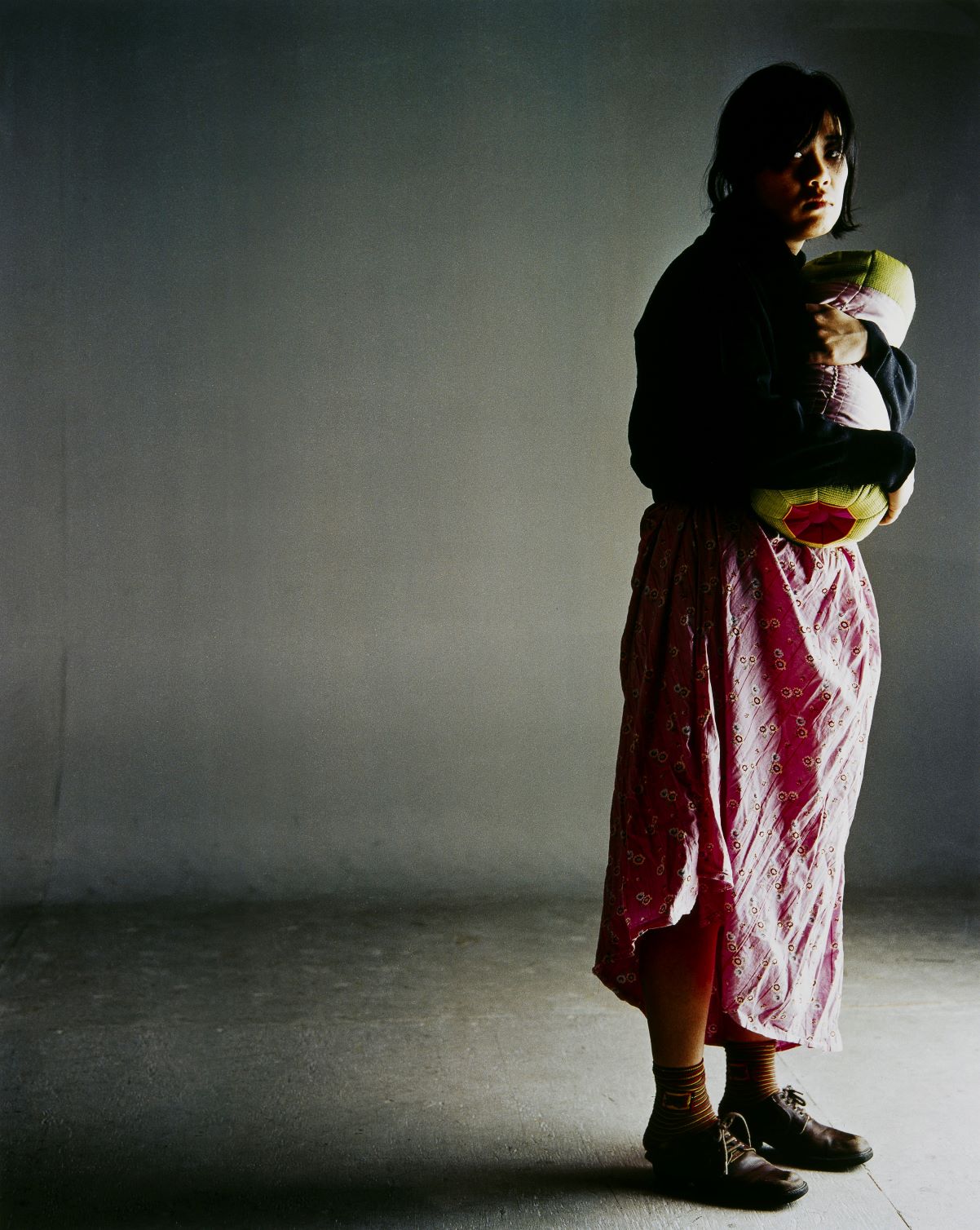![Women's art [yeoseong misul]](/admin/uploadGoods/c77c5ea1-6949-4357-945f-20e35d1e9f83.jpg)
Kim Insoon, Good Wife and Wise Mother, 1986, Acrylic on canvas, 91×110cm. MMCA collection
Women's art [yeoseong misul]
* Source: MMCA
Related
-

Minjung Art
An artistic movement that came to prominence alongside Korea’s democratization movement in the 1980s. Minjung artists often sought to critically portray the violent repression and corruption of the military dictatorship, to represent the experiences of laborers and farmers, and to achieve social change through art. In contrast to abstraction, which constituted the mainstream of 1970s art in Korea, Minjung Art is notable for the use of representational and figurative forms. One possible point of origin for Minjung Art is Oh Yoon’s work in the Reality Group (Hyeonsil dongin). The group was formed in 1969 by Kim Ji-ha, Oh Yoon, and Lim Se-taek. A variety of Minjung art groups were established, including the Reality and Utterance (Hyunsilgwa bareon) in 1979 by Kim Jungheun, Oh Yoon, Joo Jae-hwan, art critic Sung Wan-kyung, and Choi Min, the Gwangju Freedom Artist Association (Gwangju jayu misulin hyeopuihoe) in 1979 by Hong Sungdam and Choi Youl, the Imsulnyeon (The Year Imsul) in 1982, and the Dureong in 1983. These groups all commonly critiqued Western capitalism. In terms of form, Minjung artists adopted traditional and ethnic folk modes of expression using diverse media such as collage, printmaking, oil painting, and photography. Following the 15 Years of Korean Minjoong Arts: 1980-1994 Exhibition at the National Museum of Modern and Contemporary Art, Minjung Art became an accepted part of Korean art history. Overseas, Minjung Art has also become a recognized term that describes this genre and its unique focus on the political and social history of Korea.
-

Feminism
Feminism can be defined as any activism or advocacy taken to challenge sexist inequality and the patriarchal formation of society. The notion of equal rights for men and women popularly emerged in Western culture during the 19th century, and feminism as a transnational political movement saw substantive legal breakthroughs with the rise of suffragism and the enfranchisement of women in various countries in the late 19th and early 20th century. Despite these legal gains women remained widely discriminated against, and in the 1950s and 1960s so-called second wave feminists in the West began to challenge the cultural conventions and institutional structural formations behind this continued inequality. Inspired by this approach within the cultural arena, a broad movement developed in the art world among artists, academics and organizers to challenge the patriarchal historical construction and institutional structure of art history. One of the most important works in this regard was Linda Nochlin’s text, Why Have There Been No Great Women Artists? written in 1971. Since the 1970s, art world institutions have made various efforts to combat gender inequality in fields such as art criticism and exhibition planning. In addition the feminist approach to creating and curating art has created various discourses to present women’s experiences, perspectives, and challenges to the patriarchal art world establishment at a global level. The first feminist art movement in Korea started in 1986 with the October Gathering’s exhibition organized by Kim Insoon, Yun Suknam, and Kim Djin-suk and held in Min Art Gallery [Geurim Madang Min]. Advancing the cause of feminist art was a task also undertaken by the Women’s Art Research Society [Yeoseong misul yeonguhoe] under National Art Association [Minjok misul hyeopuihoe] in 1987.
-

National Art Association
An art association established in November 1985 by a collective of grassroots artists, and often also referred to as Minmihyeop. The association sought to organize artists and groups who represented the different movements within Minjung Art and to represent their varied ideas and interests. In 1995, the original association was reformed into the National Korean People’s Artists Association [Jeonguk minjok misurin yeonhap]. In turn, this was the predecessor of the Korean People’s Artists Association [Minjok misurin hyeophoe], a corporation founded in 2000.
Find More
-

Women and Reality
Women and Reality was an annual exhibition staged from 1987 to 1994 and organized by the Women’s Art Division of the National Art Association (Minjok misul hyeopuihoe). Kim Insoon, Kim Djin-suk and Yun Suknam, founding members of the National Art Association in 1995, were aware of the patriarchal tendency within the Minjung art community, and the general indifference to gender issues. They founded the Women’s Art Division within the Korean People’s Artists Association in December, 1986, with other women artists, such as Koo Seonhwe, Kim Minhee, Shin Gayoung, Lee Kyungmi, Jung Jungyeob, Choi Kyungsook, and Moon Saem. These artists actively engaged with Women's Art [yeoseong misul] and organized an annual exhibition, titled ‘Women and Reality’, from 1987 to 1994. They planned exhibition tours around Korea. They renamed the Women’s Art Division, the Women’s Art Research Society [Yeoseong misul yeonguhoe] in 1988 to highlight its aim to continue to explore gender issues through art.
-

Feminist art
Feminist Art refers to any art practice conducted with a feminine consciousness and gender equality awareness. Emerging in the 1970s in the West and in the 1980s in South Korea, Feminist Art is mainly themed around awareness of gender-discriminatory culture, feminine sensibility, and femininity, all of which have been explored by feminist artists. Feminist Art has become a revolutionary force in expanding the definition of art by incorporating new media and perspectives into established art. It was also applied to a variety of fields, including painting, performance, photography, installation, new media, film, and craft. Korean Feminist Art came into being in the mid-1980s by female Minjung artists, such as Kim Insoon, Kim Djin-suk, Yun Suknam, Park Youngsook, and Jung Jungyeob. From the 1990s onward, it evolved with a new generation of artists, including Lee Bul, ium, and Ahn Pilyun, who were influenced by postmodern culture, as main figures. A curator and administrator, Kim Hong-hee organized several exhibitions such as Women, the Difference and Power held in 1994, provided direction for Feminist Art through her research publications including Women and Art (Seoul: Noonbit, 2003), and discovered young artists. The most prominent Feminist artists in the 1990s were Yun Suknam, Park Youngsook, and Lee Bul. Young Feminist artists, who have been leading Feminist Art since the 2000s, include Song Sanghee, Yang Haegue, Chang Jia, and siren eun young jung. Ipgim, a feminist art collective that has been committed to social activism and artistic practices, organized seven of its own projects from 2000 through 2006.






